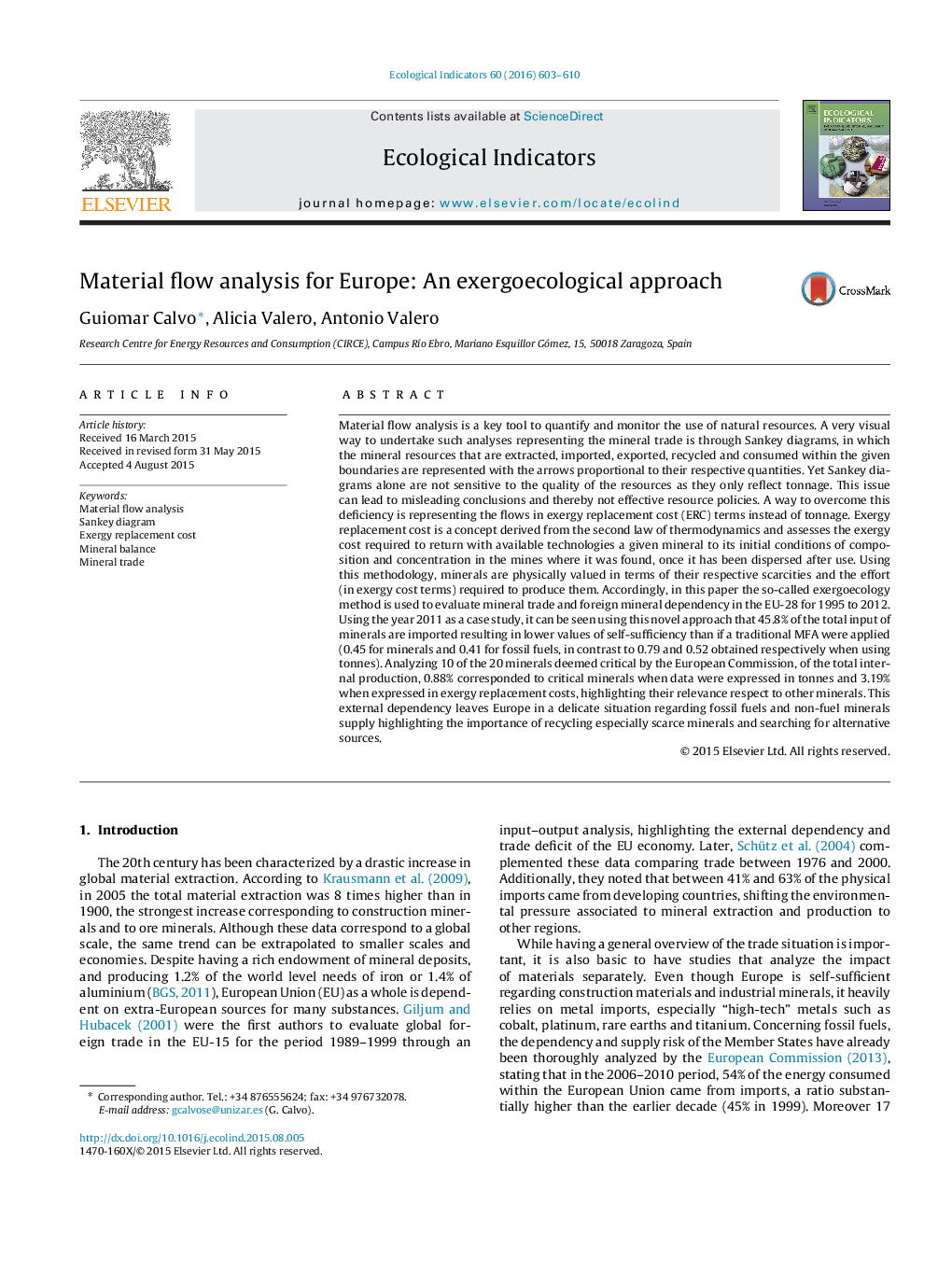| کد مقاله | کد نشریه | سال انتشار | مقاله انگلیسی | نسخه تمام متن |
|---|---|---|---|---|
| 6294114 | 1617141 | 2016 | 8 صفحه PDF | دانلود رایگان |
عنوان انگلیسی مقاله ISI
Material flow analysis for Europe: An exergoecological approach
دانلود مقاله + سفارش ترجمه
دانلود مقاله ISI انگلیسی
رایگان برای ایرانیان
کلمات کلیدی
موضوعات مرتبط
علوم زیستی و بیوفناوری
علوم کشاورزی و بیولوژیک
بوم شناسی، تکامل، رفتار و سامانه شناسی
پیش نمایش صفحه اول مقاله

چکیده انگلیسی
Material flow analysis is a key tool to quantify and monitor the use of natural resources. A very visual way to undertake such analyses representing the mineral trade is through Sankey diagrams, in which the mineral resources that are extracted, imported, exported, recycled and consumed within the given boundaries are represented with the arrows proportional to their respective quantities. Yet Sankey diagrams alone are not sensitive to the quality of the resources as they only reflect tonnage. This issue can lead to misleading conclusions and thereby not effective resource policies. A way to overcome this deficiency is representing the flows in exergy replacement cost (ERC) terms instead of tonnage. Exergy replacement cost is a concept derived from the second law of thermodynamics and assesses the exergy cost required to return with available technologies a given mineral to its initial conditions of composition and concentration in the mines where it was found, once it has been dispersed after use. Using this methodology, minerals are physically valued in terms of their respective scarcities and the effort (in exergy cost terms) required to produce them. Accordingly, in this paper the so-called exergoecology method is used to evaluate mineral trade and foreign mineral dependency in the EU-28 for 1995 to 2012. Using the year 2011 as a case study, it can be seen using this novel approach that 45.8% of the total input of minerals are imported resulting in lower values of self-sufficiency than if a traditional MFA were applied (0.45 for minerals and 0.41 for fossil fuels, in contrast to 0.79 and 0.52 obtained respectively when using tonnes). Analyzing 10 of the 20 minerals deemed critical by the European Commission, of the total internal production, 0.88% corresponded to critical minerals when data were expressed in tonnes and 3.19% when expressed in exergy replacement costs, highlighting their relevance respect to other minerals. This external dependency leaves Europe in a delicate situation regarding fossil fuels and non-fuel minerals supply highlighting the importance of recycling especially scarce minerals and searching for alternative sources.
ناشر
Database: Elsevier - ScienceDirect (ساینس دایرکت)
Journal: Ecological Indicators - Volume 60, January 2016, Pages 603-610
Journal: Ecological Indicators - Volume 60, January 2016, Pages 603-610
نویسندگان
Guiomar Calvo, Alicia Valero, Antonio Valero,